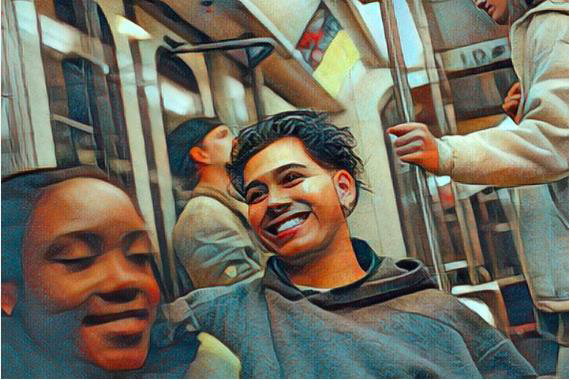WASHINGTON — You’re 16, homeless and sleeping on a park bench when police grab you at 3 in the morning. Vagrancy, trespassing or a host of minor offenses send you tumbling into the juvenile justice system.
Or you’re 16, do something stupid with marijuana, get caught trespassing, missing curfews or skipping school. You have a home but no true family support system, and suddenly, with a criminal record, nobody’s hiring, school expelled you and your family tossed you out of the house. You too wind up homeless.
The connection between youth homelessness and the juvenile system is the subject of a sweeping new study by the Coalition for Juvenile Justice and several of its partners. The report makes recommendations for policymakers, law enforcement and youth advocates and provides broad insights into a problem that has plagued juveniles for decades.
“Each year, nearly 380,000 minors experience ‘unaccompanied’ homelessness — meaning they are homeless and without a parent or guardian — for a period of longer than one week,” the report said. “These young people, much like their adult counterparts, are often cited, arrested, charged, and/or incarcerated instead of being provided with the supports they need. One million youth are also involved with law enforcement or the juvenile justice system each year, an experience that can increase their likelihood of becoming homeless.”
“It’s an aspirational document because we realize different communities are at different places, so the goal was to create something broad enough and offer enough solutions so people can pick out what works for them,” said Naomi Smoot, executive director of the Coalition. “It can be very frustrating to communities if you outline a host of problems, but don’t provide resources and ideas. The whole second half of the document was about providing those ideas.”
The study, “Addressing the Intersections of Juvenile Justice Involvement and Youth Homelessness: Principles for Change,” points to a form of double punishment many youth experience.
First they are abused, neglected or mistreated at home. The stress of living in such conditions or already being on the street most of the time create tensions and fear. The teen lashes out at a classmate, a fight ensues and assault charges funnel the youth into the juvenile justice system.
Homeless boys and girls often trade sex for shelter, or money to get shelter, and are charged with prostitution, even though in most states they would be classified as sexual abuse victims.
Authors of the study examined how more innocuous situations also lead to the justice system: A teen with a troubled home life stays with a friend’s family, but it’s a long way from his local school. Soon, truancy charges are filed, and another trip to the court system begins.
Citing a 2016 study by the Administration on Children, Youth and Families that interviewed 656 homeless youth, the report noted that 44 percent had been in a juvenile detention center, jail or prison. Nearly 62 percent had been arrested at some point, and more than half had been kicked out of their homes by the families.
To combat this, the Coalition for Juvenile Justice lists 10 Principles, recommendations and guidelines for those dealing with homeless youth who wind up in the justice system.
“Ensure that the laws and policies in your jurisdiction do not lead youth experiencing homelessness to be cited, arrested, or charged for survival acts or ‘quality of life’ offenses,” the first principle states.
Other recommendations include having courts and law enforcement set up diversion and treatment programs that will help avoid a criminal record while providing needed services. It also recommends that communities strengthen family-related services, and have long- and short-term housing available for youth who wind up on the street.
Smoot said the report is part of a broader project called “Collaboration for Change” that includes CJJ and many other partners. The study itself was a collaboration: Lead author Lisa Pilnik, director of Child & Family Policy Associates, received input from more than two dozen experts and partner organizations while writing the study.
The study makes special mention of the challenges facing LGBT youth, who it says are disproportionately likely to become homeless and to enter the justice system. Many LGBT youth are kicked out of their homes by family members. The study cites estimates that about 40 percent of all homeless youth are LGBT.
“Provide and require meaningful gender and cultural responsiveness staff training that increases knowledge and skills, with a particular focus on LGBTQ youth, youth of color, youth with disabilities, and the reasons they are more at risk for homelessness and justice involvement,” the study recommends.
The report’s authors also warned against any efforts to make LGBT youth change their sexual orientation.
“Ensure that no young person will be subjected to or referred to programs that attempt to alter their sexual orientation or gender identity (i.e., ‘conversion’ therapy).”
Hello. We have a small favor to ask. Advertising revenues across the media are falling fast. You can see why we need to ask for your help. Our independent journalism on the juvenile justice system takes a lot of time, money and hard work to produce. But we believe it’s crucial — and we think you agree.
If everyone who reads our reporting helps to pay for it, our future would be much more secure. Every bit helps.
Thanks for listening.
